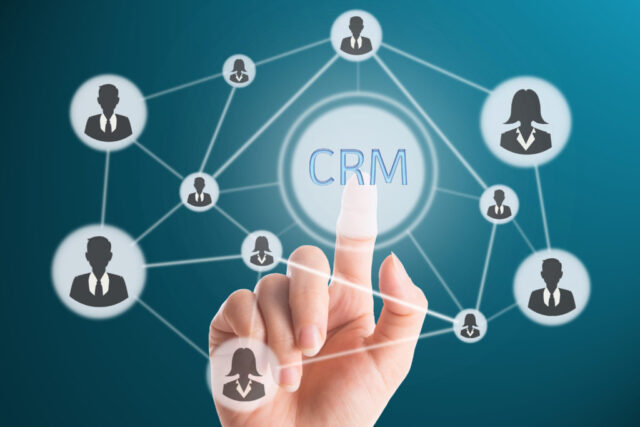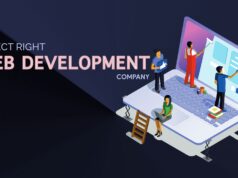
There has been talking for years about how consumer expectations are growing, and companies are hoping that digital transformation and new tools will be their lifeline in relation to customers. The basic idea is that CRM (customer relationship management) platforms will provide a holistic view of customers and their needs, so companies will be able to respond much better to these customer requirements. The problem is that existing, traditional decision-making patterns in companies still prevent this from happening.
In other words, it is not enough to just take some top CRM solution and think that the process is over. New technology combined with the old system will still not provide the best possible user experience for your customer. Still, this is easy to say, but harder to do.
Page Contents
How Did We End up With the Product No Longer in Focus?
In some past times, companies have competed in the market solely on the basis of product quality and distribution. The logic was “Make it good, put it on the shelves, and customers will come”. And so the product was at the center of the business. What has changed then?
First of all, globalization has taken place, which has increased competition, as well as digitalization, which connects customers and companies in unprecedented ways. Customers today can find hundreds of ways to spend their time and money with just one click, and research shows that 84 % of customers believe that the experience the company provides is as important as the quality of the product or service.
Therefore, in modern business, the advantage over the competition is achieved in a different way – by the company trying to understand its customers, to interest them, to engage them, and to gain their trust. Only then does the customer come to the center of interest.
In the digital age, customers expect companies to deliver a connected, personalized experience across all communication channels and at all points of contact with the brand. For this to be possible, you need to have a 360-degree-user-view in one place, which includes all the data ever collected from different phases and sectors, about each individual user.
How Do Customers Start Saying Nice Things About You?

When we talk about business processes, in traditional companies they were reduced only to the optimization of production, distribution, and sales. In modern companies, you still have to do the same thing, but then another step awaits you, and that is to think about these activities from the user’s point of view.
Furthermore, most customers today are constantly connected to the Internet and do not separate from their mobile phones for long. This means that the experiences that companies offer must go precisely through digital channels.
And indeed, if we look at modern brands emerging in the 21st century, like Netflix, Uber, or PokerStars (there are many other big casino companies offering up-to-date payment options, including cryptocurrencies, which you can find by the link), we will see that they already largely have that digital-first approach.
Main Goal: Make It Easier for Your Customers to Get What They Want
Observe contact with the customers through their eyes and redesign what you ask them to do – at every point of contact. To present this, we will first present the example of Uber.
This service redefined the use of standard taxi service by analyzing every sore spot in the taxi driving process – and then eliminating it. Someone might now say: “Well, Uber is the same as a taxi, it just takes you from point A to point B.” But it isn’t, and that is exactly the essence because your experience does not start when you get in the vehicle, but much earlier – when you found out you need transportation.
With Uber – there is no chasing for taxis through the dark streets in the middle of the night, no standing in the rain, no talking to a phone operator who tells you there are no free cars, whether someone will charge you a higher amount or not is out of the question… It is all gone by the user’s clicking on their location and digitally calling the vehicle which they then track on the map, knowing exactly how much the ride will cost them.
At the final destination, they don’t even have to think about paying because everything is paid automatically – from a credit card. The user did get from point A to point B, but much more comfortable, with much fewer obstacles and fears – all without taking out his wallet.
Step 1: Define the pieces of jobs that need to be done

Start by understanding what the user is up to, what progress they want to make. Once you define that, you will have a good starting point to meet their needs and respond to demand. This way, you will be focused on the customers, not the products themselves.
A good CRM system will help you develop a holistic view of customers, understand how they use your products and services to solve real challenges in their lives, find out what they write about you, what bothers them, what they want, what they are happy with… In other words, it helps you learn who your customers are and why they behave in a certain way.
Step 2: Listen to your customers
The easiest way to find out what is bothering users or how you can help them is to listen to them, and you will get the best insights from those who are in the closest contact with customers. We are talking, of course, about customer support, because your support agents are at the forefront of all customer complaints and suggestions.
Step 3: Solve problems at the company level, not at one department

In traditional companies, one of the biggest obstacles to development is the lack of cooperation and sharing of information between teams (the existence of what is called organizational silos). That is why modern CRM solutions offer a completely different approach.
Thanks to the fact that all the data is on one platform, the silos are being torn down, and the departments are connected in order to develop the best possible solutions through joint work and communication. For example, a product and a marketing team have to work together because a product team understands a product, but a marketing team understands the market.
Step 4: Be proactive
Once you know what users are trying to do, instead of waiting for a problem to occur, you can fix it in advance. Imagine, for example, that you are an airline business and you have to cancel a flight.
The difference between a good and an average airline is that the former will solve the problem in advance by providing alternative transportation for passengers on a canceled flight – and then informing them about it.
Also, you may want to notify customers in a particular part of the city that the cable TV signal will be interrupted, or you may want to send a personalized offer only to those customers whose contract with a mobile company is about to expire… Marketing automation tools can help you with all these actions, but it is important that there is a will to do something in time.
Put On Someone Else’s Shoes

Always put yourself in the shoes of users and imagine what they need, when, and why. Redesign your business practices, connect silos, and use modern business solutions to quickly respond to customer needs and requirements. It takes a lot of effort, but the results will not be missed.































